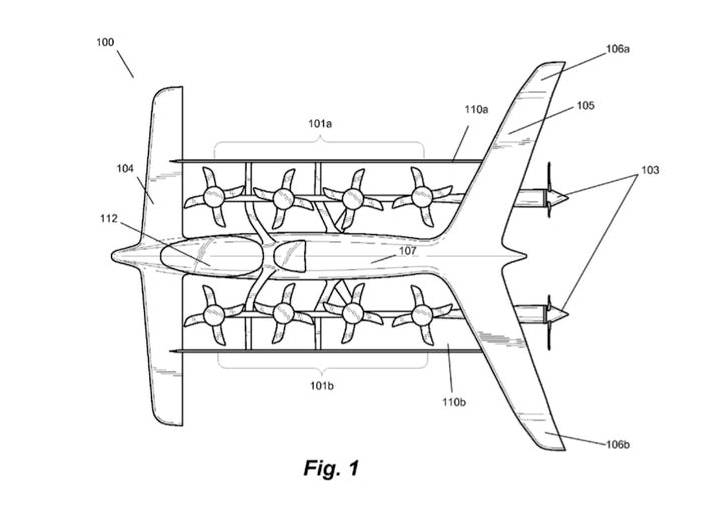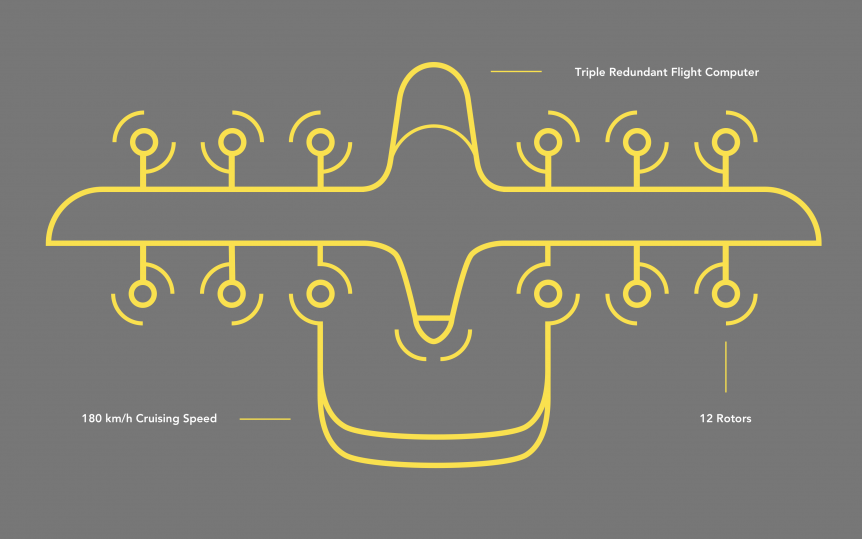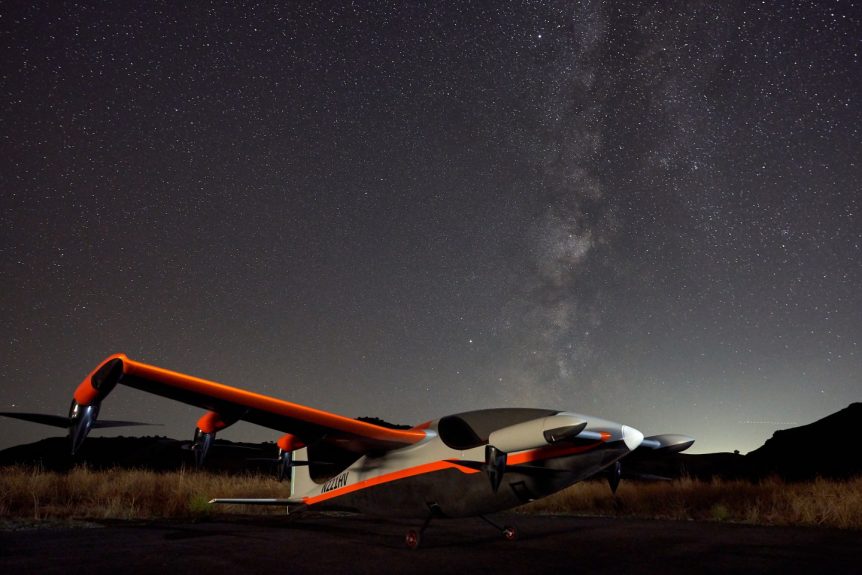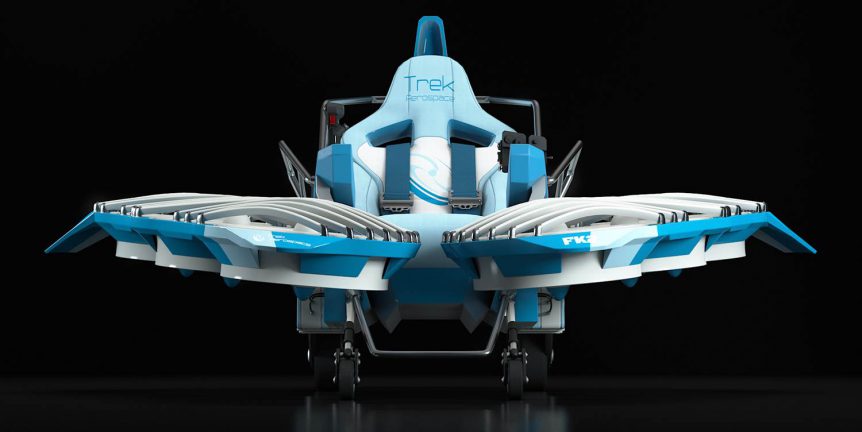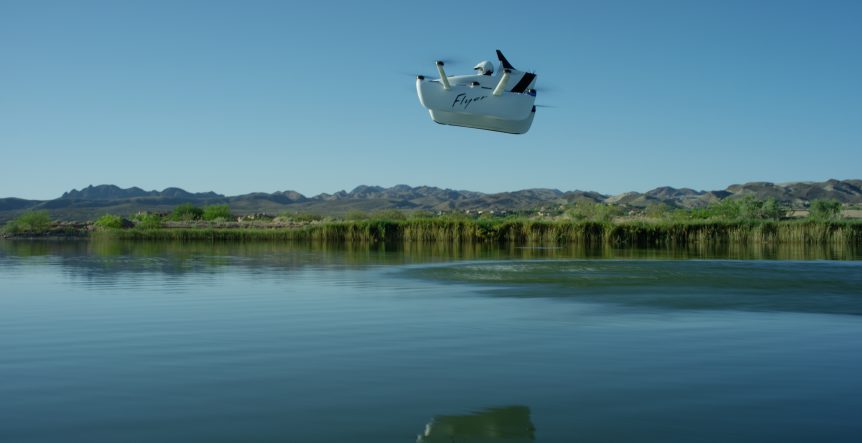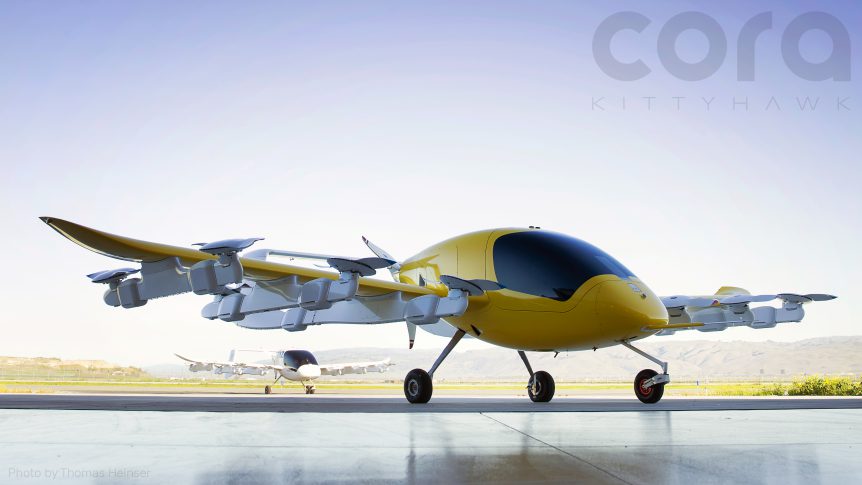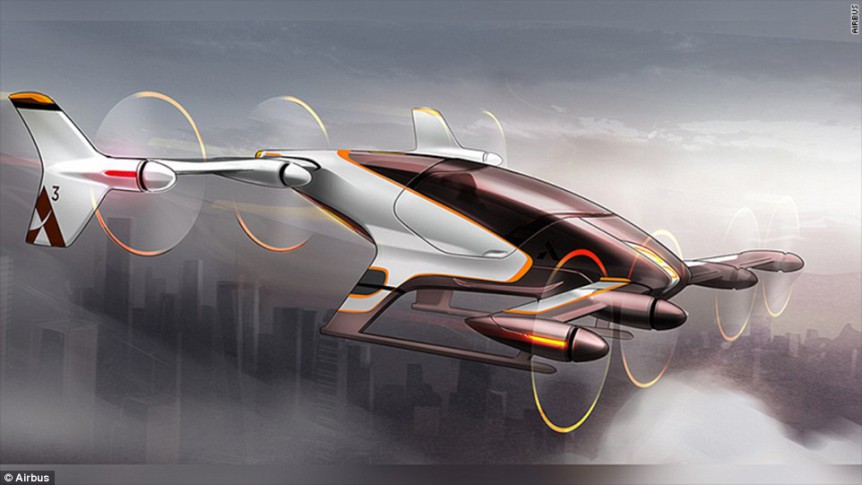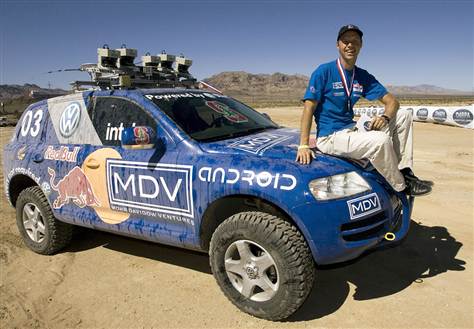While Eviation’s Alice is drawing adulation for its initial test flight, Kittyhawk, a one-time front-runner and pioneer is quietly closing down. A vision of Larry Page, Sebastian Thrun, and Ilan Kroo, Kittyhawk brought us several approaches to personal green flight, with a heavy emphasis on intuitive control and automated flight. One of its many approaches lives on, though, through sister company Wisk. Blooper Reel Kittyhawk’s earlier efforts look somewhat like an aeronautical blooper reel, one of those montages of early flying machines that evoke laughs when shown as preludes to more serious stuff in movie theaters. Kittyhawk, though, avoided crashes and humiliation. The firm explains its history: “Kittyhawk was founded in 2010 by autonomous car pioneer Sebastian Thrun with the backing of Google co-founder Larry Page to explore the frontier of then-new eVTOL aviation.” From Zee to Kittyhawk Originally founded as Zee Aviation, Kittyhawk was secretive, with only glimpses of its potential aerial vehicles surfacing as “spy shots.” The ZP-1 …
Wisk Tests Cora in US, New Zealand
Recently renamed Wisk (formerly KittyHawk) has resumed flight testing of its Cora eVTOL (electric Vertical Take Off and Landing) machines following a cautionary corona virus shutdown. It’s already got a fleet, with several prototypes in the U. S. and at least four in New Zealand. New Zealand seems to have a lock on flight testing for unpiloted aircraft, with Pyka and Cora both finding amenable administrators willing to allow flight tests. Boeing and Wisk are collaborating on achieving urban air mobility with the two-seat machine, and getting a lot of positive vibes from the locals. Partly from the NZ government, partly from local businesses, and partly from indigenous Maori tribes’ people, Wisk and Cora have found wide-spread acceptance down under. Government Support Research, Science and Innovation Minister Megan Woods announced last October that, “The Government is establishing an Airspace Integration Trials Program to support the safe testing and development of advanced unmanned aircraft and accelerate their integration into the aviation …
Heaviside – Kittyhawk’s Latest
Kittyhawk, a bay area firm possessed of wildly creative talent, has crafted the Flyer in 2017, the Cora in 2018, and just announced the Heaviside, a cross-country cruiser named for a physics and electronics genius. Its predecessors go back further, to the JobyMonarch, a single-seat, eight-motor design that made it to the construction stage. That aircraft was based on Windward Performance’s Duckhawk sailplane, a high performance machine that made the most of its sleek lines. Joby had several projects going at the time, including an energy-generating kite business that merged with Makani. Carmel deAmicis does a good job of synthesizing a long series of inventions that help lead to Heaviside. “After Joby Energy succeeded at creating airborne vessels that could generate energy from wind, it merged with Makani, a wind power company which Google recently bought. Before the merger, a group of engineers decided to use the technology developed on the turbines to build an aircraft that could hover like a helicopter and fly …
GoFly Announces First Round Prize Winners
Boeing just announced the ten winners of Phase I in its GoFly competition, in which entrants design, build and fly a “personal flying device.” As Boeing explains, contest rules are designed to enable entrants “To foster the development of safe, quiet, ultra-compact, near-VTOL personal flying devices capable of flying twenty miles while carrying a single person.” The list of partners and co-sponsors is impressive and includes virtually all major American aviation advocacy groups. As the Green Flight Challenge demonstrated seven years ago, prize money encourages a grand series of investments by individuals in hopes of winning a prize. In this case, 3,000 entries by 725 teams from 95 countries presented drawings and documents describing their proposed PFD, with a select 10 advancing to Phase II, which will require a demonstration of the proposed machine’s ability to perform as promised. “To be able to engage so many individuals from leading universities, major corporations and startups, and connect them through our community …
Kitty Hawk Flyer Shows Improvements, Limits Continue
Kitty Hawk Flyer, the Larry Page-backed “sky taxi,” seems like a great summer escape machine. One can learn to fly it in about an hour, but it will remain low and slow enough to give the thrill of flight without inordinate dangers. That’s the marketing pitch from Kitty Hawk, and it’s not a bad one. Imagine going to a beach or lake with dozens of these fluttering about over the water’s surface. It’s the same kind of lure driving go-karts on a miniature race course has for vacationers. Safety is obviously a factor for a machine meant for amateur use. John Lyon explains this in the Robb Report: “The zero-emissions Flyer is completely powered by electricity, and its propellers all operate independently, meaning that if there is a problem with one or more propellers, the entire vehicle won’t come crashing down. That said, even if it did, the aircraft is only meant for flying over water and only flies between …
Zee? Kitty Hawk? Cora?
Different Names, Different Configurations Zee, One of two aircraft companies funded by Google founder and CEO Larry Page, has been a highly mysterious business. Its web pages mostly gave discrete job descriptions for those willing to sign up for a mostly undefined mission. Occasional glimpses of patent drawings, spy shots of a multi-rotor craft in Google’s Mountain View, California parking lot came into view, and later, in-flight shots of other, different looking craft came from Hollister, California. Kitty Hawk, the other company funded by Larry Page, seems to have subsumed Zee and produced a 12-rotor, single-propeller aerial taxi about the size of a Cessna 150, but capable of vertical takeoffs and landings and seamless transitions to forward flight. A white example has flown at Hollister airport and a yellow version at a field in New Zealand. An Almost Epic Journey The intellectual, physical and geographical journey of this craft is almost epic, and seems to have resulted in a 13-motored …
Your Flying Car is on Its Way – How Soon?
Uber is projecting real-world approaches to personal transport in urban environments. Their work with Airbus affiliate A3 could help unlock gridlock for all of us. Gridlock wastes millions of hours of otherwise productive time, a key measure of “the good life.” With eVolo having demonstrated that 16 rotors can carry the weight of two people, and eHang showing a drone-like device that can carry one passenger on a 20-minute hop, urban mobility may soon become less depressing and more uplifting. Other vehicles wait in the wings, so to speak, with the main impediment being regulatory gridlock. Uber Elevates the Discussion Uber Elevate, a project on which Uber and Airbus are collaborating, published a 98-page white paper last November, Fast-Forwarding to a Future of On-Demand Urban Air Transportation. Written with contributions from Uber personnel (including Airbus’ A3), NASA, and private individuals, the paper outlines the aerial possibilities Uber intends to follow. In the meantime, Uber notes, “A study in the American …
From DARPA Ugly to Svelte and Streamlined
Seeing Google cars navigating our streets and highways, with their arrays of spinning sensors and antennas bristling from their roofs gives us the impression that the technology involved is complex and expensive. Until recently, they were, with Wired reporting that early Google cars had multiple $80,000 LIDAR systems, and entrants in DARPA (Defense Advanced Research Projects Agency) challenges often sported over a quarter-million in esoteric devices that could, on occasion, spot the Holy Spirit in the vicinity. (Your editor made that last part up.) Mike Ramsey, writing for the Wall Street Journal suggests those prices may be going down – way down. “A Silicon Valley startup says it has solved several of the issues that might plague the introduction of autonomous vehicles — primarily the cost of the equipment. “Quanergy Systems Inc., of Sunnyvale, Calif., says it will offer a light detection and ranging sensor — or LIDAR — next year that costs only $250 and is the size of …
EAS VIII: Sebastian Thrun Updates Us
Sebastian Thrun is best known for his leadership in the “Google Cars” program, fielding self-driving Priuses in the San Francisco Bay area and having the cars demonstrate a spotless accident record (except for those caused by other drivers running into them.) He shared the current status of that project with attendees at the eighth annual CAFE Foundation Electric Aircraft Symposium in late April. He’s also been responsible for Google Glass, those controversial mega-spectacles that have furnished stand-up comics with new realms of material, although the last laugh may be on scoffers as these ingenious devices point the way toward wearable computers. Thrun’s also created a new type of open university – one that takes advantage of the online experience. “Udacity was born out of a Stanford University experiment in which Sebastian Thrun and Peter Norvig offered their ‘Introduction to Artificial Intelligence’ course online to anyone, for free. Over 160,000 students in more than 190 countries enrolled and not much later, …
EAS VIII – A Day and a Half You’ll Never Forget
Who would pass up a chance to stay at a nice resort, attend lectures that challenge and inspire, and meet at poolside with speakers who bring some of the sharpest minds in the world to bear on some of the biggest problems we all face? Let’s face it. Global warming probably won’t be going away anytime soon, and aviation seems destined to play a bigger part in polluting our otherwise near-perfect atmosphere. Unless…we learn how to make our favorite activity (in the top five for most of us, anyway), into a more responsible way to travel and recreate. Since solving the problems which go with that responsibility will involve the best in aerodynamics, power systems and new, efficient technology, the CAFE Foundation has invited experts in these fields with demonstrated successes in meeting such challenges. To be held April 25 and 26, 2014 at the Flamingo Resort in Santa Rosa, California, the event will host speakers on everything from practical, …
- Page 1 of 2
- 1
- 2

